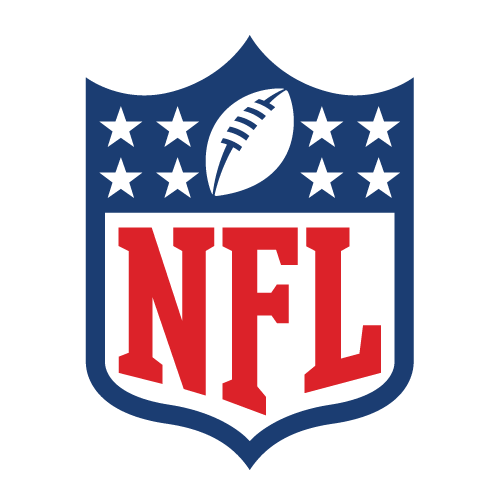|
After 12 weeks of the 2024 NFL season, we know everything, right? We've grasped which teams are legit Super Bowl contenders and which teams are already focused on rebuilding this offseason. We're absolutely 100% positive about new trends, breakout stars and disappointing units. But what if these assumptions are wrong? What if there's much more to the story than the common narrative? We paired Aaron Schatz and Seth Walder to bust 10 myths about some of the top teams, players and trends in the league. Is the running game actually back? How has Lamar Jackson improved? And are the conspiracy theorists right about the referees favoring the Chiefs in close games? Let's debunk 10 myths, starting with the blame for the Bears' offensive woes:  
The myth: The offensive line is a big part of Chicago's problem on offense.
There's plenty of blame to go around with the offense floundering, but the offensive line might be getting the most mention. Injuries are part of the issue, as the Bears lost starting tackles Braxton Jones and Darnell Wright to knee injuries in recent weeks and then guard Teven Jenkins (ankle) went down in Week 10. They have also given up the most sacks in the league (41). Why it's a myth: Sacks are as much a quarterback stat as they are an offensive line stat -- perhaps even more of a quarterback stat. Despite all those sacks, the Bears rank 17th in ESPN's pass block win rate (59.3%) and 21st in pass block losses (114). According to FTN Data charting, rookie quarterback Caleb Williams has the second-highest time to pressure in the league (2.7 seconds). The issue is less that his offensive line is folding immediately after the snap and more that he is making his own pressure by holding onto the ball too long. Whether to blame that on Williams or departed offensive coordinator Shane Waldron is up to whomever is watching. The offensive line hasn't been great, but it has been right around league-average. -- Schatz
 The myth: The running game is back.When scoring was down early in the season and there was a lot of focus on two-high safety looks, there was a notion the ground game was a better option and more important than it had been in recent seasons. Why it's a myth: The numbers simply don't support that premise. While teams are running at a slightly higher clip overall -- 40.1% of the time, which is the highest since 2010 but only 0.3% higher than it was in 2022 -- the difference in efficiency between the passing game and rushing game is actually higher in favor of passing than either of the past two seasons. As detailed as football is, a simple and central inefficiency persists -- the average dropback yields 0.07 expected points added (EPA) per play more than the average designed carry. That's a lot. And it jumps to 0.11 on first down. Another way to think about it is every 10th time an offensive playcaller opts for a first-down run, he is shaving a point off his team's scoring margin. -- Walder
 The myth: Lamar Jackson is not a pocket quarterback.There are plenty of highlight videos across the internet referring to the Ravens' superstar quarterback as "king of the scrambles." Jackson leads all quarterbacks with 584 rushing yards. But he's much more than that. Why it's a myth: Jackson's ability to scramble hides the fact he's stellar when passing from the pocket. He's the best pocket passer in the NFL this season by DVOA (53.3% above average) and EPA (0.35 EPA per play). He has completed 72% of his passes from the pocket for a league-leading 9.5 yards per attempt. This is not a one-year fluke, either. Last season, he completed 69% of passes from the pocket while averaging 7.9 yards per attempt. -- Schatz
 The myth: Chop Robinson has had a disappointing rookie season.Robinson, who has two sacks, was selected No. 21 overall, two picks after Rams edge rusher Jared Verse and one spot ahead of Eagles cornerback Quinyon Mitchell. Why it's a myth: Robinson started slowly, with no more than one pass rush win in each of the first four weeks. However, Miami was forced to rely more on him after Jaelan Phillips suffered a season-ending torn ACL in Week 4, and Robinson has started to flourish. He now has a 19% pass rush win rate at edge, which is 10th-best in the league for the position. And he posted a 50% pass rush win rate in Week 11 against the Raiders, the highest of any player this past week. The sacks will come. -- Walder

The myth: The officials favor the Chiefs late in close games.When the Chiefs began 9-0 with seven wins by a touchdown or less, there were conspiracy theories about referees favoring them. Was the league trying to guide Kansas City to a three-peat? Was the idea that Chiefs wins are good because the league is trying to attract more Swifties to the NFL? Who knows. Why it's a myth: Looking only at late- and close-game situations (eight points in either direction, second half or overtime) and including both declined and offsetting penalties, the NFL team with the most flags is ... Kansas City. It is tied with the Colts, having 29 penalties in such situations. Only the Jets and Saints have more penalty yards than Kansas City's 218 in late and close situations. The Chiefs also rank third in how frequently penalties have been called on their opponents in these situations. Officials don't favor them; they just might have randomly been a bit more officious when the Chiefs were playing all those close games. -- Schatz
 The myth: Quarterback Jayden Daniels is the Offensive Rookie of the Year.With a 67.7 QBR that ranks fifth among all quarterbacks and the Commanders sitting at 7-4, Daniels is the prohibitive favorite for the OROY award. He currently has minus-600 odds at ESPN BET. Why it's a myth: Daniels is having an amazing season, but he wouldn't get my vote right now. Dissecting this myth requires bringing diving into my worldview of "Of The Year" awards, which is that they measure performance relative to a player's position. This contrasts the MVP award, where quarterbacks logically are almost always the deserving recipient. We shouldn't conflate "Offensive Rookie of the Year" with "Most Valuable Rookie." For as good of a season as Daniels is having, Raiders tight end Brock Bowers is having a better one. While Daniels' QBR ranks fifth-best among all rookie quarterback seasons since 2006, Bowers ranks first among all rookie tight end seasons since 2007 with a ridiculous 2.4 yards per route run. And he's doing it with Gardner Minshew (along with Aidan O'Connell and a little Desmond Ridder) throwing him the ball. It should be Bowers' award to lose. -- Walder
 The myth: The 49ers have the worst special teams unit in the NFL.Special teams ineptitude has played a major role in both of the 49ers' losses and some narrow escapes. Jake Moody's three missed field goals in the Week 10 win over Tampa Bay are the most obvious example. But in a Week 2 loss to Minnesota, the 49ers had a punt blocked and a drive that started on their own 10 because of a kickoff return penalty. In a Week 3 loss to the Rams, Moody missed a 55-yard field goal and then the 49ers allowed a 38-yard punt return that gave the Rams great field position for a game-winning field goal drive. Why it's a myth: In a regular year, the 49ers might have the worst special teams unit in the league, but this is no ordinary season because the Titans' special teams has been historically awful. Tennessee's special teams' DVOA is over twice as bad as San Francisco's. In fact, it is the second-lowest special teams DVOA ever for a team after 10 games. Only the 2010 Chargers were lower. That team led the NFL in both yards gained and the fewest yards allowed, yet they missed the playoffs because their special teams were so horrendous. The Titans are below average in every aspect of special teams except field goal kicking, but what stands out is punt coverage. They have allowed eight returns of 20 or more yards, including a touchdown. No other team has allowed more than five such returns. -- Schatz
 The myth: Quarterback Tommy DeVito played pretty well last season, so the Giants can recapture some of his 2023 magic.The Giants made the surprise move to skip over Drew Lock and start DeVito in Week 12 after benching Daniel Jones. New York went 3-3 in DeVito's starts last season, when he captured the attention of a region. Why it's a myth: Sure, DeVito had his moments, but we can do better than quarterback wins when evaluating a player. DeVito's numbers were not inspiring; he recorded a paltry 24 QBR, had a minus-4% completion percentage over expectation, per NFL Next Gen Stats, and a completely outrageous 16% sack rate (the average sack rate last season was 7%). I don't see much to engender confidence except with regard to the Giants' first-overall pick chances, which FPI increased to a league-high 19.2% after the team switched to DeVito. -- Walder
 The myth: Quarterback Justin Herbert is carrying the Chargers into the playoffs.Coach Jim Harbaugh has quickly turned around the Chargers. After going 5-12 last season, Los Angeles is 7-3. ESPN's FPI gives the Chargers a 95% chance of making the playoffs. Herbert is the team's leader and one of the most talented quarterbacks in the NFL. Why it's a myth: Both FPI and DVOA say the Chargers have been better on defense than offense in 2024. The real hero of this turnaround is defensive coordinator Jesse Minter, who came with Harbaugh from Michigan. The Chargers ended Week 11 ranked 10th in defensive DVOA, including sixth against the pass. They are fifth in the league in defensive sacks (34) despite the fact that they are only 24th in pass rush win rate (38.2%) and seem to never have linebackers Joey Bosa and Khalil Mack healthy at the same time. (Only four times this season have the Chargers gotten at least 20 defensive snaps out of both players.) Meanwhile, Herbert ranks 17th with 56.3 QBR. -- Schatz
 The myth: Defenses are having success by disguising their safety deployment.Defenses have been rotating from single-high looks pre-snap to two-high coverage and vice versa more than ever. In 2017, NFL defenses spun their safeties in this way on 17% of dropbacks. That rate has increased every season and is 29% now. And no team does it more than the Vikings (43%). Why it's a myth: The question is the success part. While safety rotation has become an increasingly large part of the game, offenses are having more success on dropbacks this season when the opponents' safeties rotate (.066 EPA per play) than when they don't (.056). This doesn't mean that it's not worth doing sporadically, but we aren't seeing a global advantage for defense the way we do for offenses with play-action. That said, this tactic has produced results for Minnesota specifically, as opponents are averaging minus-.020 EPA per dropback against the Vikings' disguised safety looks (and .125 without). -- Walder
|
